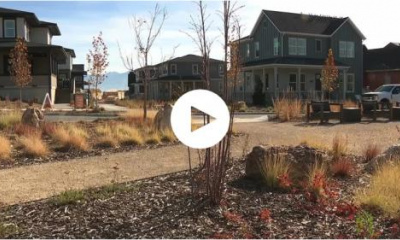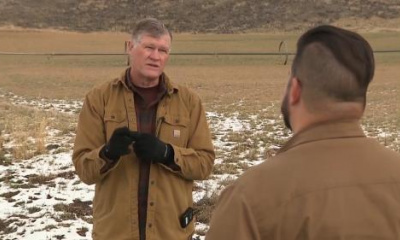Headlines from the beginning of the 2024 Utah Legislature declared that lawmakers were considering spending millions for the Great Salt Lake and conservation.
So what got passed — and passed over — in the end?
I’ve read the news coverage, looked at budget requests, the final budget and lobbyists’ bill trackers, and attended the Utah Water Task Force committee March 6, 2024.
Read on for a comprehensive overview.
What passed
- $10 million (vs. $20 million request) for Great Salt Lake Investments. Intended to "get additional water to the lake," some of the fund will pay for split season and seasonal leases, the Great Salt Lake Commissioner's office told me, along with other strategies. Split season leases pay farmers to not grow an extra crop and instead send their water downstream.Read more about split-season leasing in this KSL.com story.
- $5 million (vs. $10 million request) in federal funds for the Ogden Canyon Water Line. Will help replace a 90-year old pipeline that loses 3 million gallons of water/day. Ogden City says it will put some of the saved water in the Willard Spur Waterfowl Management Area to prevent avian botulism that kills "tens of thousands of birds each year" because of hot, shallow water.Read more about the pipeline in this Deseret News story.
- $2.5 million (vs. $2 million request) to work on eradicating invasive phragmites, which drains water from the lake. $500,000 will pay for additional staff to manage a $500,000 project for Utah Lake, $500,000 project for Bear Lake and $1 million project for Great Salt Lake. Sponsor says eradicating the weed could add "over 35,000 acre-feet of fresh water" to the lake and the funding will cut the amount of time for removal from 15 years to 5 years.
- $1 million for Transparent Water Billing. Utah's Division of Water Resources will "continue a program that has helped cities and irrigation companies educate water users on water use behavior and how they can conserve through their water bills and online data portals," according to the funding request.
- $600,000 (vs. $875,000 request) for Utah Growing Water Smart. It will allow more cities to participate in workshops about how to incorporate water-smart planning as they plan for growth, along with guiding communities and landscapers on water-saving techniques.
- $426,000 to develop water curriculum for Utah students. According to the bill the lessons will include an overview of the water cycle, how water is used in various sectors, the pass through of water used in industries and households to the Great Salt Lake, jobs created by industry and the importance of agriculture, strategies for individuals to protect water quality and strategies for individuals to "optimize" the use of water. While "information on the geological and climate changes for the last 30,000 years that created and changed the Great Salt Lake" will be included, lessons may not include information on human-caused climate change, according to the bill.
- HOA's can't require grass under HB275.
- New government buildings can't inefficiently water grass in certain areas under HB11. Read more about it in this FOX 13 News story.
- Fewer secondary water users will have to meter their water use, under SB125. Exempts municipal water providers with 1,000 or fewer connections in the Great Salt Lake basin from installing meters on their secondary water lines by 2030, a change from the original bill that would have exempted more providers. Installing meters leads to less water use.Read more about it in this Salt Lake Tribune story.
What didn't pass
Carrots and sticks for using less water, including:
- $12.5 million to incentivize more turf removal.
- Ban, with fines, for watering lawns during shoulder-season.
- $1 million to incentivize water-efficient landscaping in new residential development.
- Resolution encouraging water efficient landscaping for new construction.
- $400,000 request to pay for water-reduction demonstration projects on farms in the Great Salt Lake watershed.
Studies to see how public entities use water and if taxpayer-funded conservation programs are working, including:
- Study of public schools' water use. Study could have considered use indoors and outside, whether schools use meters, size of lawns and amount of nonfunctional turf. Could have recommended actions to assist schools in saving water and if schools should be required to report their annual water usage.
- Study of water use by golf courses.
- Study of how to get more municipal water to the lake. Bill called for studying if measures including water banks, the taxpayer-funded secondary water metering program, or the taxpayer funded turf-removal incentives can help the lake and what changes could be made to those state policies to get more water to the lake.
- Annual report quantifying the amount of water saved in the taxpayer-funded agricultural optimization and secondary metering programs and how much was made available for the lake, Colorado River and elsewhere.








